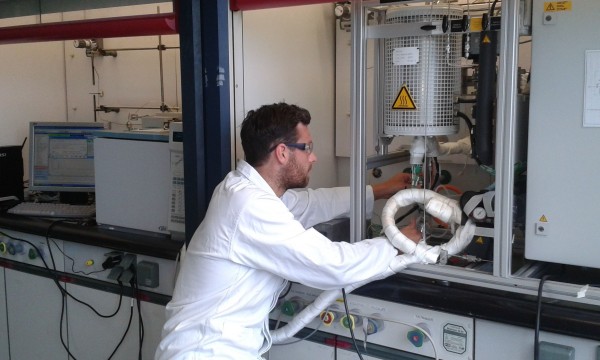Methanol isn’t new as a fuel – late in the 20th century it gained some traction, especially as a blend-in in gasoline, but it’s faded since then as a transportation option. It burns cleaner than gasoline, but the process to make it has an environmental impact.
Now a team of German researchers is looking to pump new life into methanol as transportation alt-fuel by packaging it as a way to use carbon dioxide. Doing so, they say, could reduce the CO2 emissions by 50 percent.

You know carbion dioxide: dreaded CO2, scourge of the earth, greenhouse gas extraordinaire. We’ve got more of it than we know what to do with, but the researchers, at the Freiburg Materials Research Center (FMF) in Germany, led by the chemist Ingo Krossing, thinks it is closing in on a way to use CO2 on a big scale to produce methanol.
Methanol – widely used as a chemical – is a simple alcohol with the chemical formula CH3OH. It’s typically produced through a two-step process that uses catalysts to convert methane, a component in natural gas, to make a syngas. The syngas is then processed into methanol.
Put most basically, the Freiburg team wants to simplify the process, combining carbon dioxide with hydrogen to make methanol. Sounds great, but this is an energy intensive process, requiring a good deal of heat, for starters. Then there’s the matter of hydrogen — it takes additional energy to produce hydrogen (possibly emitting more CO2).
Still, the Freiburg team seems to be suggesting that they’ve got an efficient way to pull it off, citing catalysts that allow the process, known as hydrogenolysis, to occur at lower temperatures, and saying they can get a pure version of methane if the catalysts are impregnated with ionic liquid that helps to fix CO2 and hydrogen to the catalyst.
Beyond the chemistry, the Freiburg team’s scheme is as about creating a kind of energy cycle, harvesting CO2 from power plants.
“The CO2 will be filtered out of the waste gas stream of a combined heat and power plant and used to produce methanol,” the team said. “When methanol is burned in a motor, CO2 is released again. If the same molecule were used twice, it would theoretically be possible to use 50 percent less CO2 to create the same amount of energy.”

The researchers figure that capturing and using 10 percent of Germany’s CO2 emissions would cover the country’s yearly fuel needs.
It sounds great, but the question remains how efficient this method of producing methanol really is (maybe this will come out in scientific papers from the team). Is it a better bet than using methane, as suggested by a team at Oxford? Then again, if the German’s methanol production process — including the derivation of hydrogen — can be powered by renewables, including wind power generated at night when it’s not needed on the grid, they might be in business. The Freiburg team also sees the potential for methanol as a means of essentially storing the volatile hydrogen, using it in fuel cells. Indeed, just last year the U.S. Department of Energy said it was partnering with a California company to test the market capabilities of methanol fuel cells.